Ever since AMD released the first Ryzen 5800X3D chip, they have become some of the top-end mainstream CPUs on the market. Combining the already powerful Zen-based compute clusters with additional stacked L3 cache has proven a strong combination for gamers as well as for many applications ranging from virtualization to professional engineering. While the 5800X3D had only 8 Zen 3 cores, AMD upped the ante with the 7950X3D, a variant of their 16-core desktop SKU that offers the additional cache. Today, we are taking a look at the Ryzen 9 9950X3D, the new Zen 5 successor to the Zen 4-based 7950X3D from 2023. I have not gotten to game on it yet since that is less of an STH focus, but I have managed to put it through its paces as a workstation CPU quickly. Let us get to it.
AMD Ryzen 9 9950X3D Overview
The Ryzen 9 9950X3D is a direct upgrade to the Ryzen 9 7950X3D. It features the same 144MB of L2+L3 cache over 16 cores and 32 threads and sits in the same AM5 platform. From my perspective, there are two major differences to speak of between the two chips.
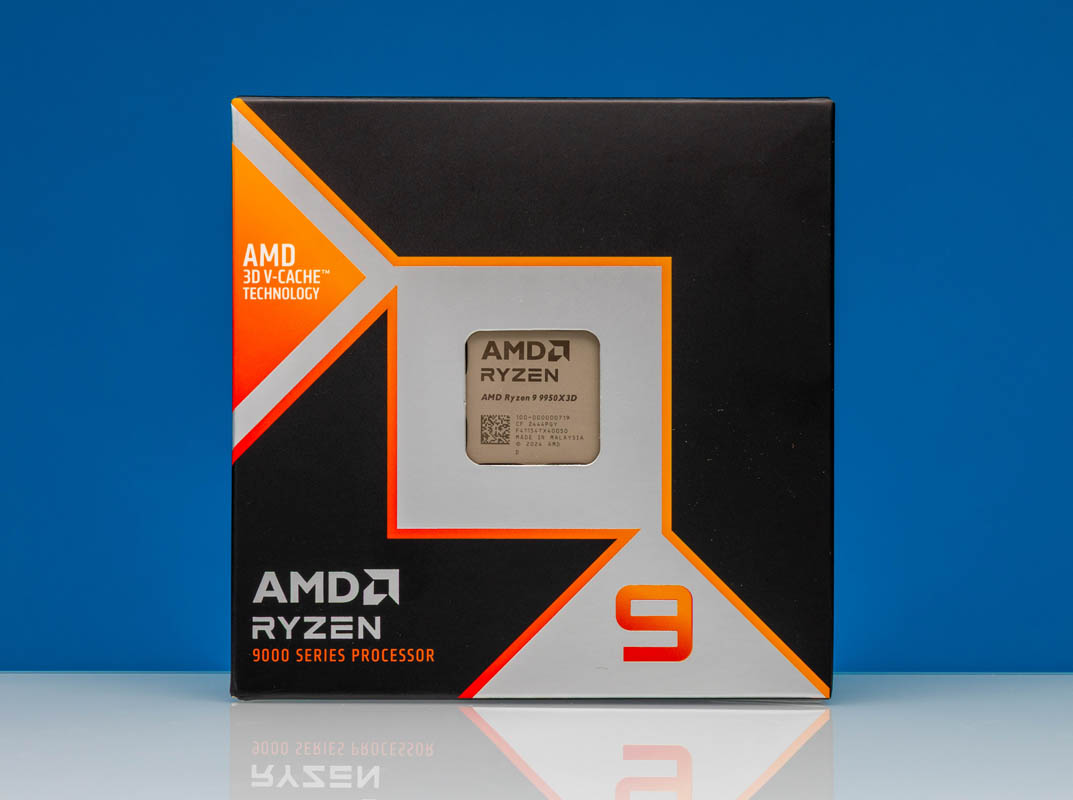
First, the 9950X3D is a Zen 5 part, compared to the 7950X3D which was based on Zen 4. Out of the gate, the move to Zen 5 represents around a 10-15% generational uplift in performance due to the more advanced architecture.
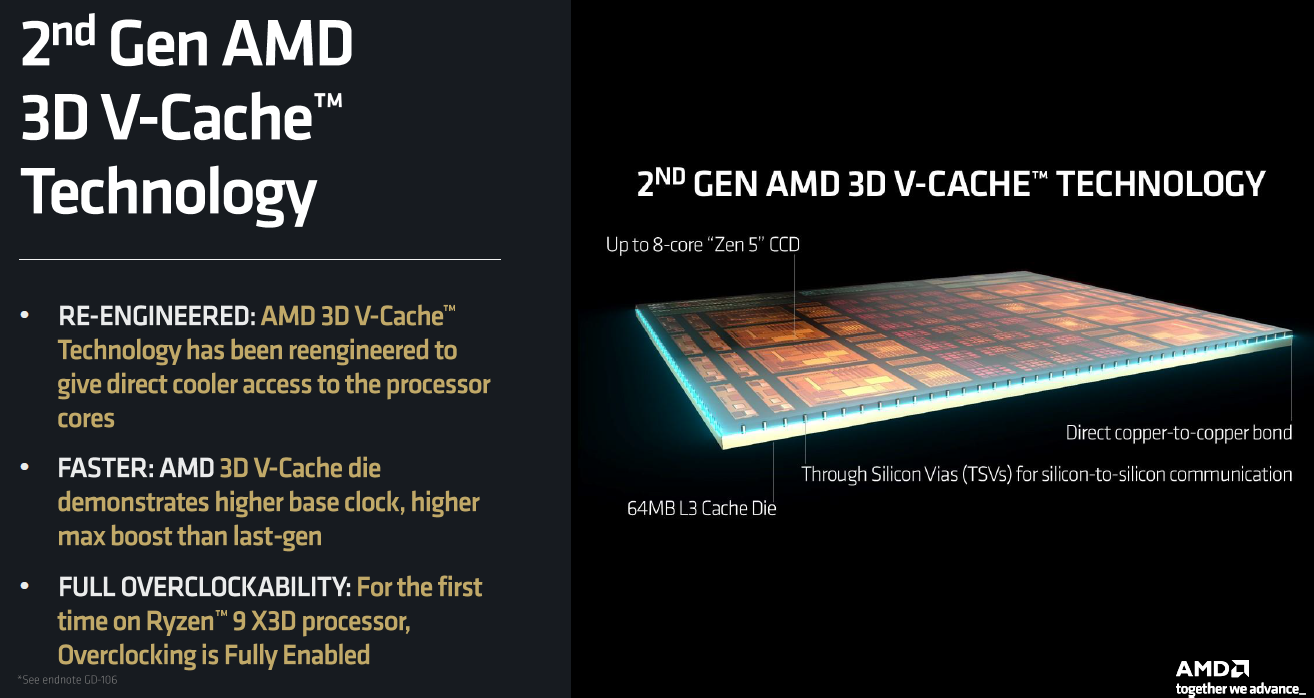
Second, the actual method of stacking the 3D V-Cache onto the CCD has changed. In the 5800X3D and 7950X3D, the 3D V-Cache was placed on top of the Ryzen CCD, whereas on the 9950X3D the 3D V-Cache is now underneath the CCD. This has an effect on cooling; previously the X3D cache was between the heat-generating cores and the heatsink. This caused AMD to implement a slightly lower maximum operating temperature of 89C on X3D parts, where non-X3D parts would scale to 95C. Additionally, overclocking options were restricted on previous generation X3D parts. With the Ryzen 9000 series of X3D chips, both of those challenges have been resolved, and as a result, the Ryzen 9000 series of X3D chips are fully unlocked for overclocking and have thermal limits set to 95C.
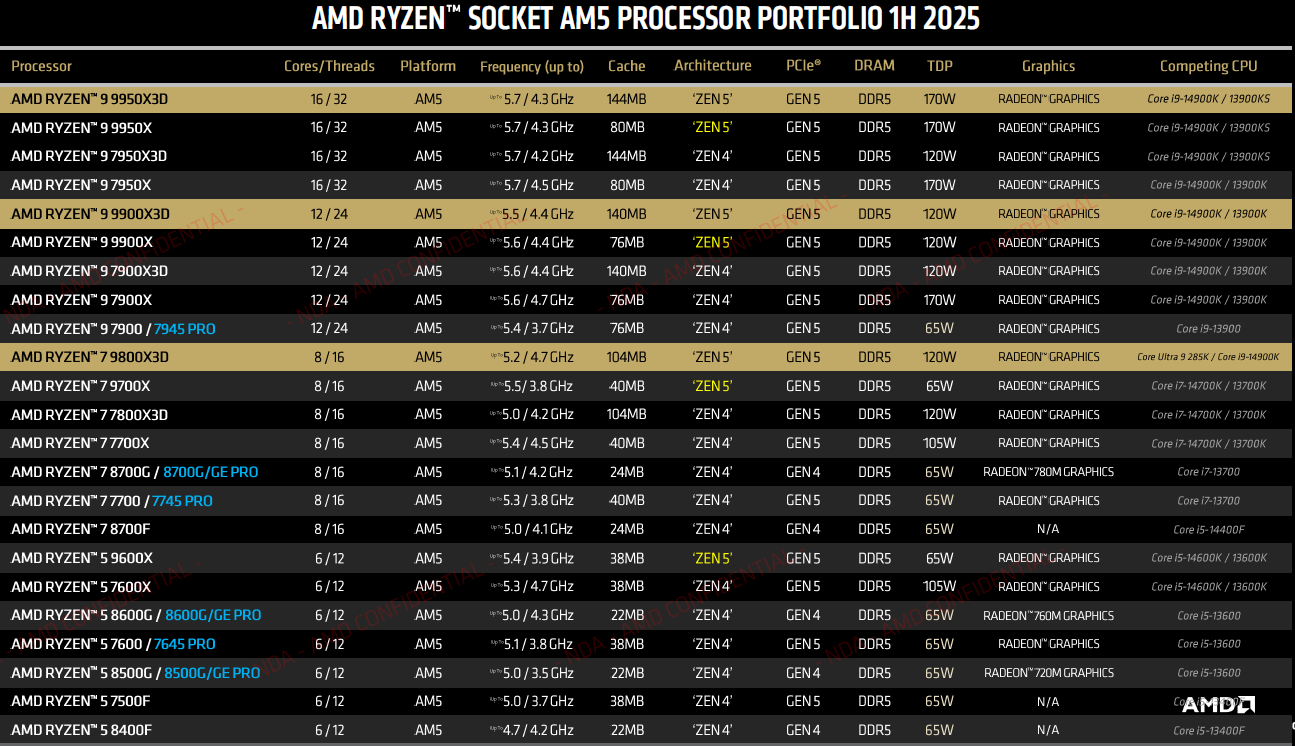
AMD is releasing both the 9950X3D, which I have a sample of, and the 9900X3D which I do not. Together with the 9800X3D this rounds out the whole 9000X3D series.
When it comes to raw specs, the Ryzen 9 9950X3D has 16-cores clocked at 4.3 GHz base clock, 5.7 GHz boost clock. As with previous 16-core X3D parts, only one of the 8-core CCDs is equipped with the extra 3D V-Cache, which means the 9950X3D is a slightly heterogeneous design. Some cores have direct access to extra L3 cache, and others do not We can see this in lstopo. The first 8-core CCD has 96MB of total L3 cache, while the second only has 32MB.
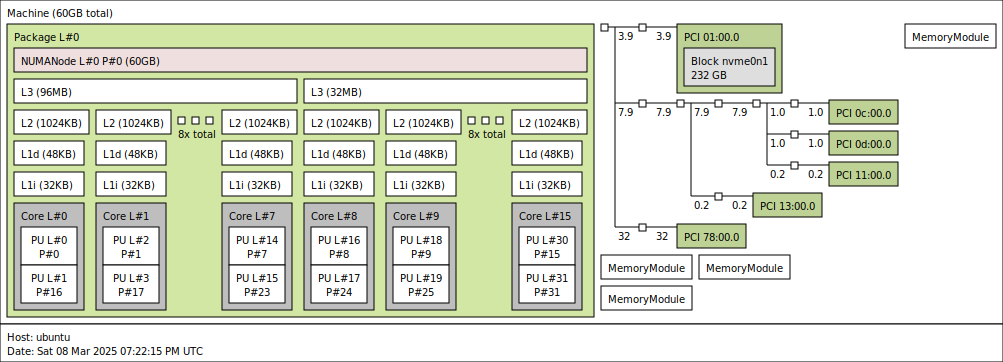
In spite of this heterogenous design, AMD has never quoted separate boost clock limits for the 3D V-Cache CCD versus the standard CCD, but in practice they have often boosted differently. For the 7950X3D, it was common for the 3D V-Cache CCD to run around 400-500 MHz slower than the normal CCD. This behavior is something I’ll want to test in the 9950X3D to see if that is still the case.
The cache arrangement for the 9950X3D is identical to the 7950X3D; each 8-core CCD brings 8MB of L2 cache and 32MB of L3 cache to the party, for a total of 16MB L2 and 64MB L3. One of the CCDs is then equipped with an additional 64MB of additional 3D V-Cache, which acts in concert with existing L3 cache for a total of 144MB of available L2+L3 cache or 16MB+128MB.
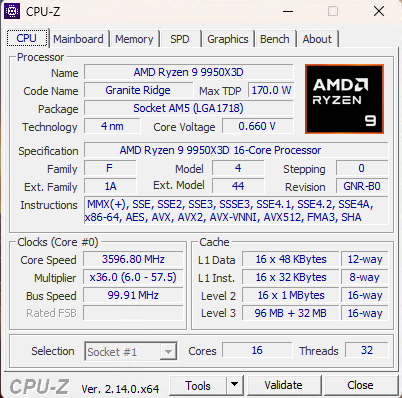
As for power, the 9950X3D is the first X3D chip from AMD with a 170W TDP; previous X3D chips were rated for 120W TDP or lower, often coming in with a lower TDP than their non-X3D siblings. For example, the Ryzen 9 7950X had a 170W TDP, but the 7950X3D only had 120W. The rearranged 3D V-Cache stacking seems to have resolved this issue, allowing AMD to push their X3D parts at full power.
AM5 Ecosystem
AMD’s Ryzen platform is fairly mature at this point, consisting of two full generations of motherboards. 600-series motherboards based on X670(E) and B650(E) chipsets should be receiving BIOS updates to support the new chips right alongside the newer 800-series boards.
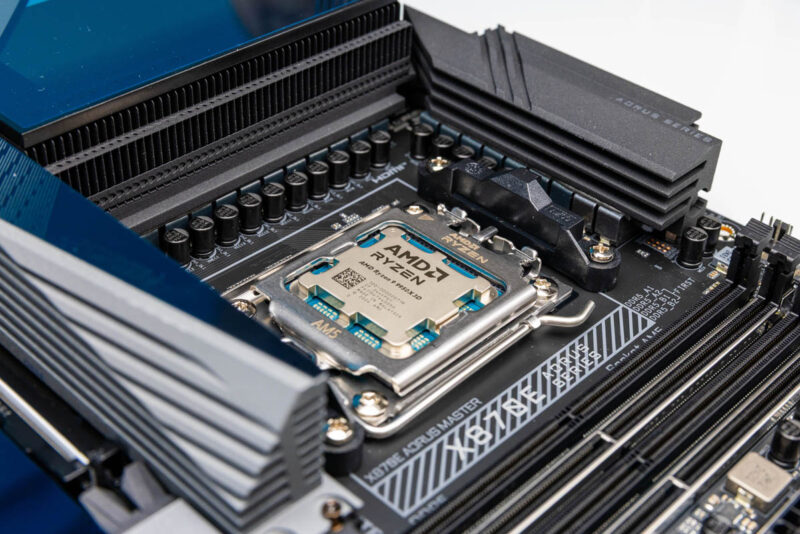
When the AM5 platform first launched, it was a fairly expensive proposition to get into; motherboards were costly, as was the DDR5 RAM that was required along with it. One of the major selling points for Intel’s competing 12th/13th generation platforms was DDR4 support, which was attractive to budget-conscious upgraders who already had sticks of DDR4 on hand.
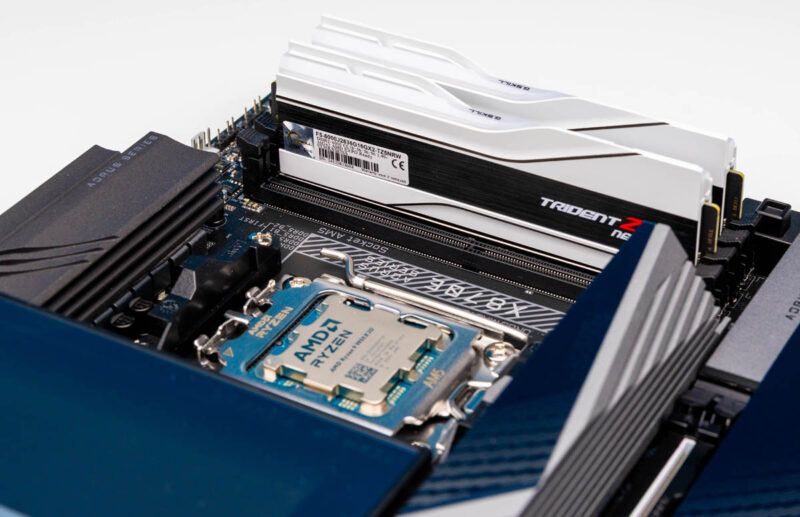
That was 2.5 years ago, and things are in much better shape now. DDR5 memory is less expensive than it once was, and competent 600 and 800 series motherboards can be had for $120 or less.

For my testing I have a Gigabyte X870E Aorus Master board, which is a fairly high-end offering, though that should have minimal effect on my testing. This 800-series board features USB4 support, 5GbE networking, and WiFi7, none of which I was able to utilize for this review but are nice to have on the platform. I will have a dedicated article covering the board later on.
Next, let us get to the test configuration.




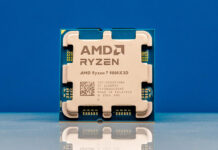
‘With all of this said, if AMD gave us the option to have 3D V-Cache on both CCDs so that we could avoid having one set of lower cache and one set of higher cache cores, I think a lot of folks would be interested.’
I’d be interested in a theoretical dual v-cache 9950x3d up to about the $1000 mark. AMD could easily position such a product in a new halo tier at such a price.
> “And as a final note, when Ubuntu was being tested a USB gigabit ethernet adapter was used since the onboard 5 Gbit NIC was not supported out of the box on Ubuntu and I connected the USB adapter for simplicity.”.
You need kernel 6.13 for the Realtek 8126 support built-in, which Ubuntu 24.04.2 lacks.
See also: https://github.com/awesometic/realtek-r8126-dkms?tab=readme-ov-file
Rob,
Thanks! I saw that, just wasn’t worth it since I wasn’t doing any NIC throughput testing. I don’t have a 5 Gbit switch anyways :)
“You need kernel 6.13 for the Realtek 8126 support built-in, which Ubuntu 24.04.2 lacks.”
“See also: https://github.com/awesometic/realtek-r8126-dkms?tab=readme-ov-file”
Which means FreeBSD will have support in about 3-5 years. :)